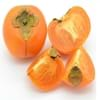Health Benefits
Arthritis treatment, Cancer prevention, Heart care
Cancer prevention, Controls blood pressure, Heart care, Increase in haemoglobin, Prevents constipation, Prevents macular degeneration, Reduces nervous tension
General Benefits
Anti-inflammatory properties, Cures cough, Cures fever, Digestive aid, Healing of wounds, Maintains healthy cholesterol level
Controls blood pressure, Helps in weight loss, Maintains healthy cholesterol level, Strengthens bones
Skin Benefits
Anti-aging benefits, Brightens and lightens complexion, Reduces wrinkles, Treatment of dark spots
Brightens and lightens complexion, Hydrates skin, Skin rejuvenation, Treatment of acne
Hair Benefits
Promotes longer and healthier hair, Protects hair, Rejuvenates scalp, Shiny hair
Good conditioner, Regulates hair growth, Softening mask
Allergy Symptoms
Abdominal cramps, Hives, Itching, Nausea, Wheezing
Abdominal pains, Anaphylaxis, Coughing, Headaches, Hives, Itching, Nasal congestion, Skin rash, Sneezing, Sore throat, Swelling of hands
Side Effects
Allergic reaction, Skin rash, Possibly unsafe during pregnancy
Allergic reaction, Skin rash, Possibly unsafe during pregnancy
Best Time to Eat
As a snack in the late afternoon, Eat the fresh ones, avoid mixing with any other foods, don't eat after meal., Morning time (before lunch), Strictly avoid empty stomach
Best if taken as a breakfast (or empty stomach), Don't consume at night and before bed, Morning time (before lunch)
Vitamin B5 (Pantothenic Acid)
Vitamin C (Ascorbic Acid)
Vitamin K (Phyllochinone)
Phytosterol
Not Available
Calories in Fresh Fruit with Peel
Not Available
Calories in Fresh Fruit without Peel
Not Available
Calories in Frozen Form
Not Available
Season
Winter
Summer, Winter
Varieties
Clementine, Dancy, King Mandarin, Murcott, Ponkan, Robinson, Satsuma and Sunburst
Abyad, Adriatic, Alma, Atreano, Bataglia, Black Bethlehem, Black Madeira, Black Mission, Brown Turkey, Sierra, Calimyrna, Kadota, Deanna, Figoin and Hardy Chicago Fig
Color
Orange
Green, Purple, Red
Origin
South-Eastern Asia
Western Asia
Grows on
Not Available
Trees
Soil Type
Well-drained
Clay, Limestone, Loam, Sandy
Climatic Conditions
Sunny
Dry, Warm
Facts about
- It is known by another name ' Mandarin'.
- Oil extracted from its peel is used in various skin and hair care products.
- Tangerines is also known as the ‘Christmas Orange’ because it is used to stuff kids' stockings..
- Fig tree is considered as a symbol of abundance, fertility and sweetness.
- The fig is made up of 55% of natural sugar so they are the sweetest fruits.
- Figs are used as a fat substitute in recipes.
Spirits
Not Available
Yes
Cocktails
Not Available
Yes
Top Producer
China
Turkey
Other Countries
Brazil, Iran, Italy, Japan, Korea, Morocco, Spain, Turkey
Albania, Algeria, Brazil, Egypt, Iran, Morocco, Syria, Tunisia, United States of America
Top Importer
China
France
Top Exporter
Spain
Turkey
Botanical Name
Citrus reticulata
Ficus carica
Synonym
Citrus clementina or Citrus nobilis
Not Available
Subkingdom
Tracheobionta
Tracheobionta
Division
Magnoliophyta
Magnoliophyta
Class
Magnoliopsida
Magnoliopsida
Subclass
Rosidae
Alismidae
Species
C. reticulata
Ficus carica
Generic Group
Citrus fruit
Mulberry
Compare Tangerine and Fig
It is important compare Tangerine and Fig as both the fruits have a different nutritional value. Their comparison can be done on the basis of their vitamin and mineral content, calories, benefits as well as characteristics, making it easier for us to choose the best fruit for our diet. Their general health benefits are as follows:
Tangerine Benefits: anti-inflammatory properties, cures cough, cures fever, digestive aid, healing of wounds and maintains healthy cholesterol level.
Fig Benefits: controls blood pressure, helps in weight loss, maintains healthy cholesterol level and strengthens bones.
Fruits are also used as a remedy for various hair problems. The hair benefits of Tangerine are: promotes longer and healthier hair, protects hair, rejuvenates scalp and shiny hair and hair benefits of Fig are: good conditioner, regulates hair growth and softening mask. Some fruits are known to cause allergic reactions. The allergy symptoms of first fruit are: abdominal cramps, hives, itching, nausea and wheezing and the symptoms of second fruit are: abdominal pains, anaphylaxis, coughing, headaches, hives, itching, nasal congestion, skin rash, sneezing, sore throat and swelling of hands. Get sorted Tangerine vs Fig comparison with the help of fruit comparison tool by fruitvs.com.









